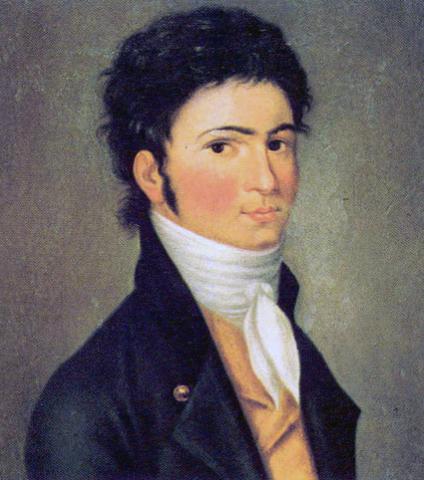In this image, we see a portrait of Beehoven by Carl Traugott Riedel. It depicts the musical prodigy as a young man in 1801.
Beethoven, the great composer, was ill for much of his adult life. He was also totally deaf when he created some of his best work.
Before he died, he wrote a letter to his brothers, begging them to find out why he had been in such poor health for so long. That letter is referred to as the Heiligenstadt Testament.
Locks of the maestro’s hair, snipped from his head at the time of his death, have provided the answer Beethoven sought for so long. Let's investigate.
In 1802, Beethoven was going deaf. Increasingly upset about his condition, he addressed the Heiligenstadt Testament to his brothers Johann and Carl. That letter was found in Beethoven’s desk, after his death. It had never been sent.
When he died in 1827, the highly esteemed composer was 56 years old. had been totally deaf since age 50.
During much of his adult life, Beethoven had been plagued with extreme abdominal pain and related ailments. Although he sought help from numerous physicians, he found no relief. Despite his physical difficulties, and his complete inability to hear, Beethoven composed the 9th Symphony (which is still used to celebrate major events such as the fall of the Berlin wall.)
Named for the village on the Danube where it was written, the Heiligenstadt Testament provides a rare glimpse into Beethoven’s psyche. He begs his brothers to find out, after his death, what caused his many physical maladies. Nearly 200 years after he asked the question, we finally have an answer. And it comes from an unlikely source: Beethoven’s own hair.
Many people snipped locks of Beethoven’s famous hair immediately after his death. One of those locks, cut by a teenager, miraculously survived to this day. Ferdinand Hiller, then a 15-year-old musician, took a piece of Beethoven as a memento of the brilliant but irascible composer.
Hiller, who became a composer and conductor himself, placed his treasure into a locket and later gave it to his son Paul. The younger Hiller identified the object with his handwritten description.
The story of the locket's travels, from Vienna to the United States, is a fascinating one. Likely, during the Holocaust, it had purchased safe passage for a Jewish family.
In 1994, Sotheby’s auctioned the locket containing hundreds of strands of Beethoven’s hair. It was purchased for $7,300 by Americans who wanted to establish a Beethoven Center at San Jose State University. Eight strands of hair were submitted for careful study and DNA analysis.
After several years of work, scientists discovered a startling fact: Beethoven’s hair contained huge quantities of lead - about 100 times the average. With little question, those researchers believe, Beethoven had lead poisoning.
That condition, also known as “plumbism,” certainly could have caused the maestro's constant abdominal pain and depression. It may well have contributed to his death.
Another key question is: Did lead poisoning cause Beethoven’s deafness? At this stage of study and analysis, the answer seems to be “no.”
Perhaps, however, there is more to learn from Beethoven’s hair.





